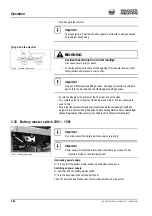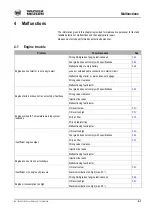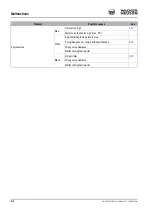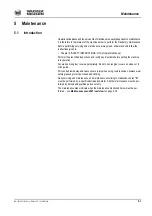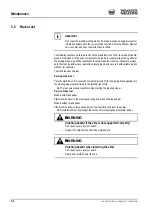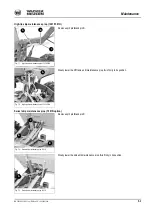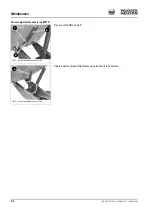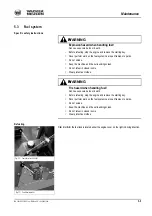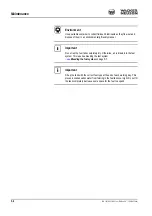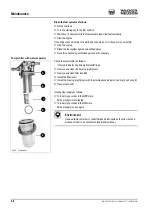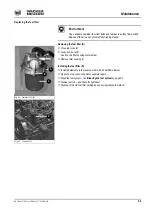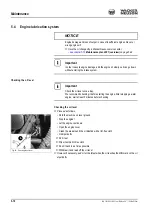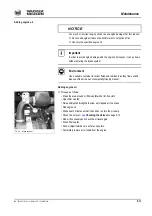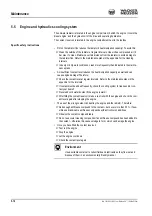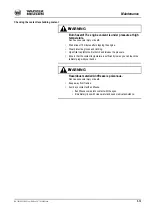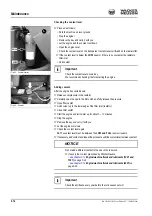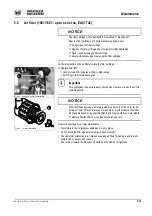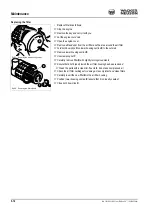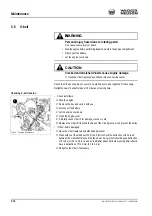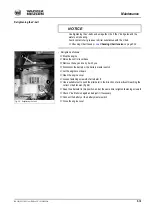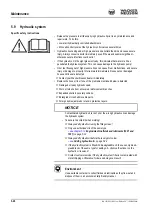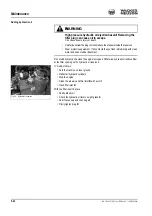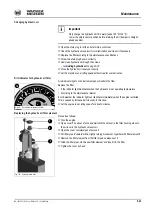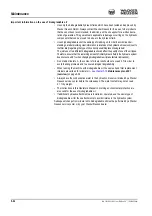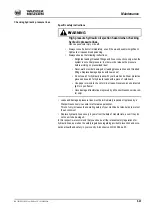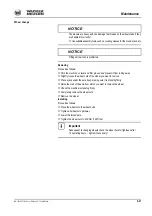
5-12
BA 1001/1501/2001 us – Edition 3.3 * * 12001b510.fm
Maintenance
5.5
Engine and hydraulics cooling system
The oil/water radiator is located in the engine compartment, behind the engine. It cools the
diesel engine, and the hydraulic oil of the drive and operating hydraulics.
The coolant reservoir is located in the engine compartment next to the toolbox.
Specific safety instructions
• Dirt on the radiator fins reduces the radiator’s heat dissipation capacity! To avoid this:
☞
Clean the outside of the radiator at regular intervals. Use oil-free compressed air (2
bar max.) to clean. Maintain a certain distance from the radiator to avoid damage to
the radiator fins. Refer to the maintenance plans in the appendix for the cleaning
intervals
☞
In dusty or dirty work conditions, clean more frequently than indicated in the mainte-
nance plans
• An insufficient coolant level reduces the heat dissipation capacity as well and can
cause engine damage! Therefore:
☞
Check the coolant level at regular intervals. Refer to the maintenance plans in the
appendix for the intervals
☞
If coolant must be added frequently, check the cooling system for leaks and/or con-
tact your dealer!
☞
Never add cold water/coolant if the engine is warm!
☞
After filling the coolant reservoir, make a test run with the engine and check the cool-
ant level again after stopping the engine
• The use of the wrong coolant can destroy the engine and the radiator. Therefore:
☞
Add enough antifreeze compound to the coolant – but never more than 50 %. If pos-
sible use brand-name antifreeze compounds with anticorrosion additives
☞
Observe the coolant compound table
☞
Do not use cooler cleaning compounds if an antifreeze compound has been added to
the coolant – otherwise this causes sludge to form, which can damage the engine
• Once you have filled the coolant reservoir:
☞
Test run the engine
☞
Stop the engine
☞
Let the engine cool down
☞
Check the coolant level again
Environment
Use a suitable container to collect fluids and lubricants as they flow out and
dispose of them in an environmentally friendly manner.

